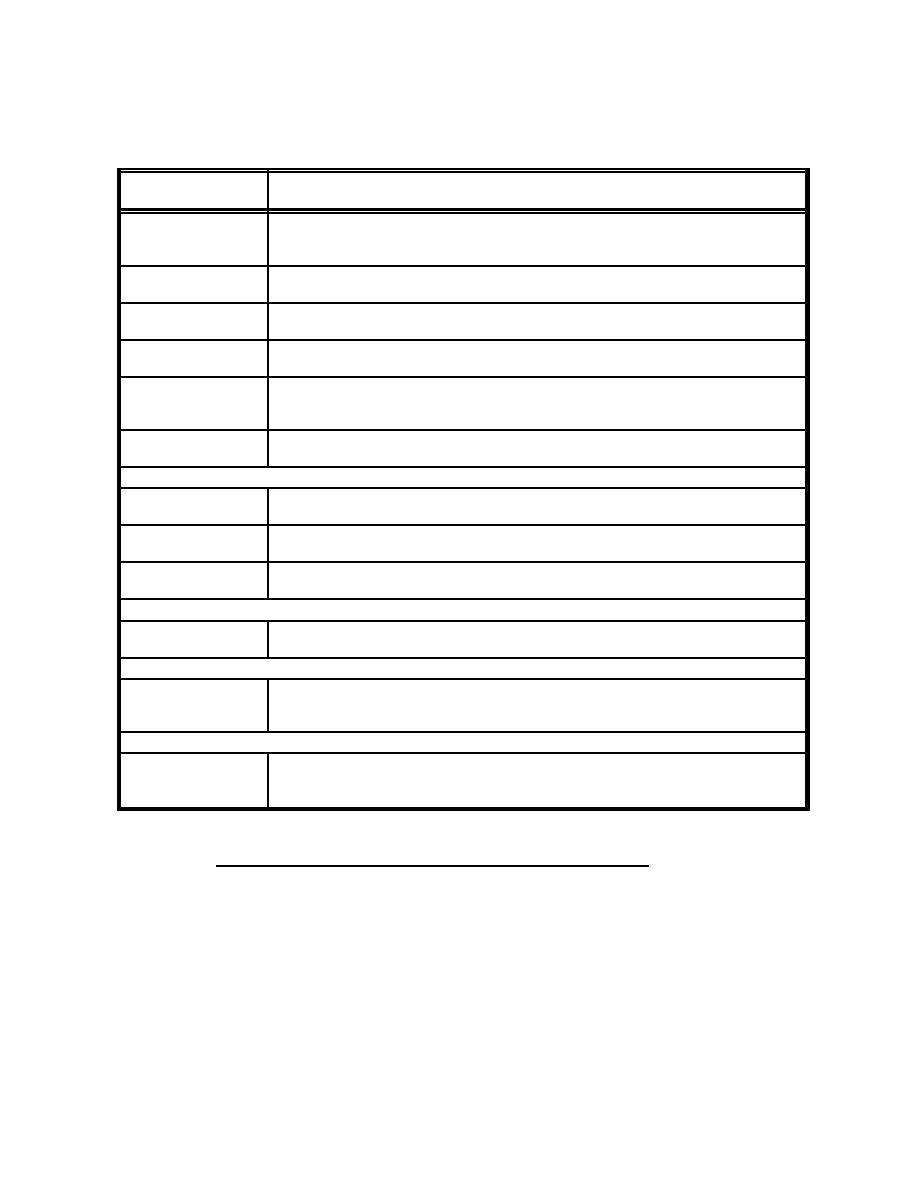
MIL-HDBK-1110
Table 5 (Continued)
Lead- and Chromate-Free Coating Specifications With VOC Limits
TT-P-25
Oil-based primer for wood, normally available with a VOC
content less than 350 grams per liter
TT-P-31
Red and brown oil ("roof and barn") paint, usually
available with 250 grams per liter VOC content but no
requirement specified
TT-E-489
Alkyd enamel, with 420 grams per liter VOC limitation,
available only in gloss, but in a wide variety of colors
TT-P-645
Corrosion-resistant alkyd primer, with a 340 VOC
limitation
TT-P-664
Corrosion-inhibiting alkyd quick-dry primer, with a 420
grams per liter VOC limitation
MIL-E-24635
Silicone alkyd enamel, available in limited colors, 275,
340, and 420 grams per liter VOC types, and high, medium,
low, and flat gloss classes
MIL-P-28582
Alkyd primer normally available at less than 350 grams per
liter
Epoxy Coatings
MIL-P-24441
Epoxy-polyamide, two- and three-coat systems, available in
types with 340 VOC and limited colors
MIL-P-53022
Fast-dry epoxy primer with 420 grams per liter maximum VOC
content
MIL-P-85582
Waterborne epoxy primer with 340 grams per liter maximum
VOC content
Textured Coatings
TT-C-555
Waterborne or oil- or rubber-based textured coating
available at 250 grams per liter
Urethane Coatings
MIL-C-85285
High-solids aliphatic urethane coating, with 340 and 420
grams per liter VOC types, available in a variety of
colors and in glass and semigloss
Zinc-Rich Coatings
MIL-P-24648
Zinc-rich coating, aqueous and organic solvent types,
self-curing and post-curing classes, organic and inorganic
vehicles, with 340 grams per liter maximum VOC content
4.4
Recommendations for Different Substrates. This portion
of Section 4 provides general recommendations for wood, concrete
and masonry, steel, galvanized steel, and aluminum surfaces. The
recommended dft in mils is provided for coating specification
recommended for a particular substrate. More detailed
recommendations for coating particular structures are presented
in Section 5 of this handbook. Referenced standards for coatings
provide for lead- and chromate-free products that are low in
VOCs. Although such requirements may not be necessary at all
activities, such requirements may occur in the near future.
39



 Previous Page
Previous Page
